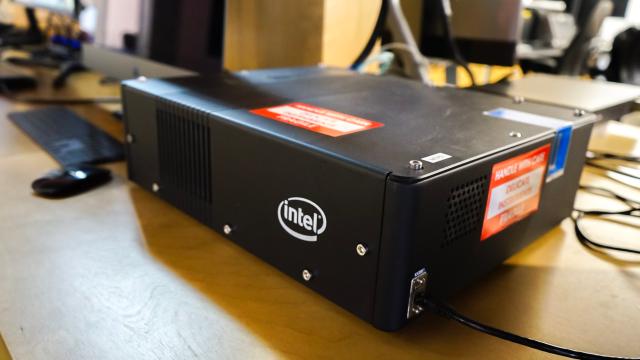A couple of years ago, the talk of the town was that Australia wouldn’t see 5G until 2020 at the very least. But how time flies: not only was the first 5G Wi-Fi precinct enabled earlier this year, Telstra is gearing up to have their 5G network running next year.
Ahead of the network’s rollout, Telstra has begun to show some of the edge case scenarios that will benefit from the new network. And one of those: low latency applications.
While the current 4G network can deliver some admirable download and upload speeds under a variety of conditions, it’s never been outstanding as far as latency is concerned. If you’re just looking to video call your parents or stream something off YouTube, 4G can handle that just fine – but there’s a growing range of applications that require vastly better response time than what the current mobile network can handle.
OpenSignal compared the 4G networks through their paces a couple of years ago, and the best average response time was Optus with 51.88ms. That’s improved significantly with the growth of the LTE network: as of last month, the fastest average latency on Australian 4G networks was Vodafone at 30.3ms, followed by Optus at 32.72ms.
Of course, the key here is that conditions on the mobile network vary significantly – and often. And even more importantly, a response time of 30ms at best doesn’t really leave a lot of headroom if you’re dealing with critical situations.
Image: Alex Walker / Kotaku
A few of those test cases were on display at Telstra’s Innovation Centre in the Southport on the Gold Coast, where representatives from partners Ericsson and Intel also talked up the possibilities of the future network. One edge case scenario that will benefit is healthcare, particularly surgical operations where lower latencies can reduce risk and increase the viability of remote surgery to begin with.
Another obvious application is autonomous driving: response times can be critical for avoiding accidents on the road, even more so when factoring in the amount of data that a self-driving car collects and computes at any given time.
Channa Seneviratne, Telstra’s executive director of network and infrastructure engineering, added that the military was also keen on the applications of 5G. “In fact, next Monday we’re going to have this room full of people from Defence Innovation, and they’re going to see some of these demonstrations,” Seneviratne said.
Online gaming was also showcased at the Innovation Centre, with Telstra hosting local CS:GO team Chiefs. Telstra set up a WAN-like environment whereby the team connected to a server through the 5G network, resulting in a stable ping of around 5-6ms.
I ran some quick tests of my own connecting to Sydney-based servers through the CS:GO server browser and the in-game matchmaking, and while there wasn’t enough time to play a full match, the latency was comparable to residential wired connections and, most importantly, stable.
And if you’re interested in pings, here’s some footage from the Telstra innovation centre connecting to a random Australian matchmaking server #5G #CSGO pic.twitter.com/Dl4oVLT3ZJ
— Kotaku Australia (@KotakuAU) May 8, 2018
Frank Li, founder and general manager of Chiefs, confirmed that the team was getting stable pings of 12-25ms to their practice servers in Sydney from the Gold Coast.
Low pings aren’t just useful for gaming though: they’re helpful for remote training, where professionals can walk someone through a procedure or critical situation. They’re useful on the manufacturing line, much in the same way faster response times can be critical for autonomous vehicles.
Virtual reality and augmented reality will also get a boost from the new network, Seneviratne explained. Agriculture will also benefit hugely: farms in Australia are increasingly filled with IoT and automated devices, with farmers relying on automated irrigation systems, autonomous GPS-enabled tractors, and sensor to help monitor the health of crops.
But more than anything else, the 5G network will help Australia’s existing infrastructure to support the demands of users. 5G-enabled devices, ranging from routers like the next iteration of the Netgear Nighthawk router to the next generation of mobile phones, will utilise the 4G and 5G networks concurrently, although they’re not expected to land until the middle of next year.
“We know today, for example in our networks, 50% of the data we carry is video. By 2020 it’s going to be 70-75% … and just on the cellular network, only five-six years ago, video was about 10% [of data carried,” Seneviratne said. “All of the social apps now have embedded video, so consumption has just skyrocketed.”
Jonathan Wood, a senior director at Intel for 5G market development and partnerships, added that 5G could also help expand offerings for those with limited options. “Now with 5G … it really does have the abillity to have a realistic viable alternative in a fixed-case [scenario]. So in Australia, I anticipate mobile broadband – and I don’t know how Telstra and others are positioned, and I don’t know the regulatory position so be careful what I say – but mobile broadband can be used in a fixed – you can put a fixed gateway device into a building using a millimetre wave, short distances,” Wood explained.
“You can have 2, 3 or 4 gigabit speeds in terms of capacity, if you get enough spectrum available to you as an operator. And that’s significantly more higher service than you would probably get in a traditional cable, fixed environment. So it just provides you an alternative that you wouldn’t have before.”
It’s believed that the next spectrum auction would take place around September or October. ACMA has already announced that the 3.6GHz band would be auctioned off in Q2 this year, although companies are pushing regulators to move the planning and auction process forward for the millimetre wave spectrum as well. Multiple speakers also reiterated that the standards for 5G would not be fully ratified until September.
The author attended the event as a guest of Telstra.
